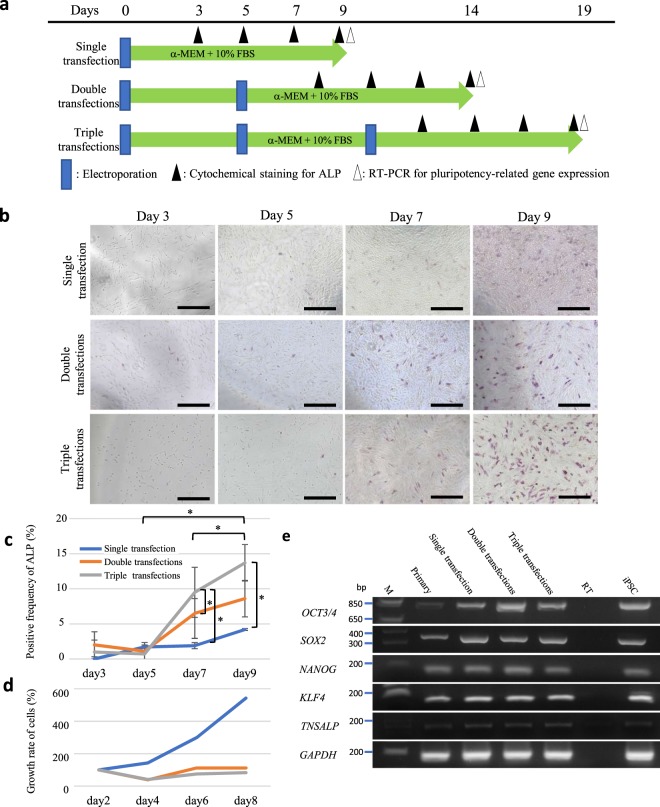Figure 2.
Increased pluripotency-related gene expression in HDDPCs after repeated transfection with Yamanaka’s four reprogramming factors. (a) Time-line for assessment of pluripotency-related gene expression in HDDPCs after repeated transfection. (b) Cytochemical evaluation of ALP activity in the HDDPCs after repeated transfections with the reprogramming factors. HDDPCs (P05 line) were transfected with Yamanaka’s four reprogramming factors once, twice, or three times. The treated cells were subjected to cytochemical staining for ALP activity at 3, 5, 7, and 9 days after the final transfection, as shown in (a). Bar = 500 μm. (c,d) Ratio of ALP-positive cells (c) and proliferation curves (d) for HDDPCs when the P05 line was subjected to transfection once, twice, or three times. After the final transfection, cells were seeded onto 4- or 24-well plate, and fixed (for cytochemical staining for ALP activity) or harvested (for counting the cell number) at the days indicated. (e) RT-PCR analysis of HDDPCs after the repeated transfections. HDDPCs (P05 line) were transfected with Yamanaka’s four reprogramming factors once, twice, or three times, and harvested 9 days after the final transfection for RT-PCR analysis for detection of mRNA expression of OCT3/4, SOX2, NANOG, and KLF4, tissue-nonspecific alkaline phosphatase (TNSALP), and glyceraldehyde-3-phosphate dehydrogenase (GAPDH) (as control). Lane 1, HDDPCs (P05 line); lane 2, HDDPCs after the single transfection; lane 3, HDDPCs after the double transfection; lane 4, HDDPCs after the triple transfection; lane 5, no template (as negative control); lane 6, iPSCs (as positive control). M, 100-bp ladder markers.

